July 10, 2022
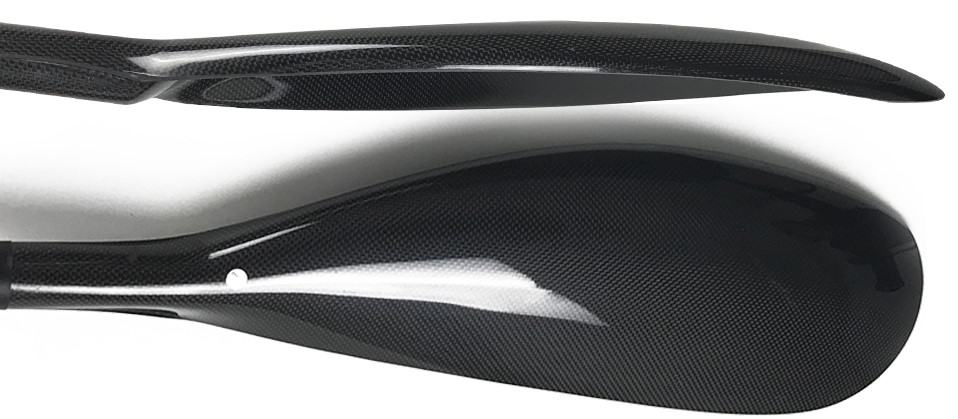
This article is 1,300 words long, about a five minute read.
In this kayak wing paddle blade article, we will focus on exactly that; the kayak wing paddle blade and how it works. We will discuss some technique about its use, but not much else on paddle variations like length, weight, shaft stiffness, offset/feather, bent shafts, blade size, shapes, tips and so forth. This article explains how kayak paddle wings work as science and art.
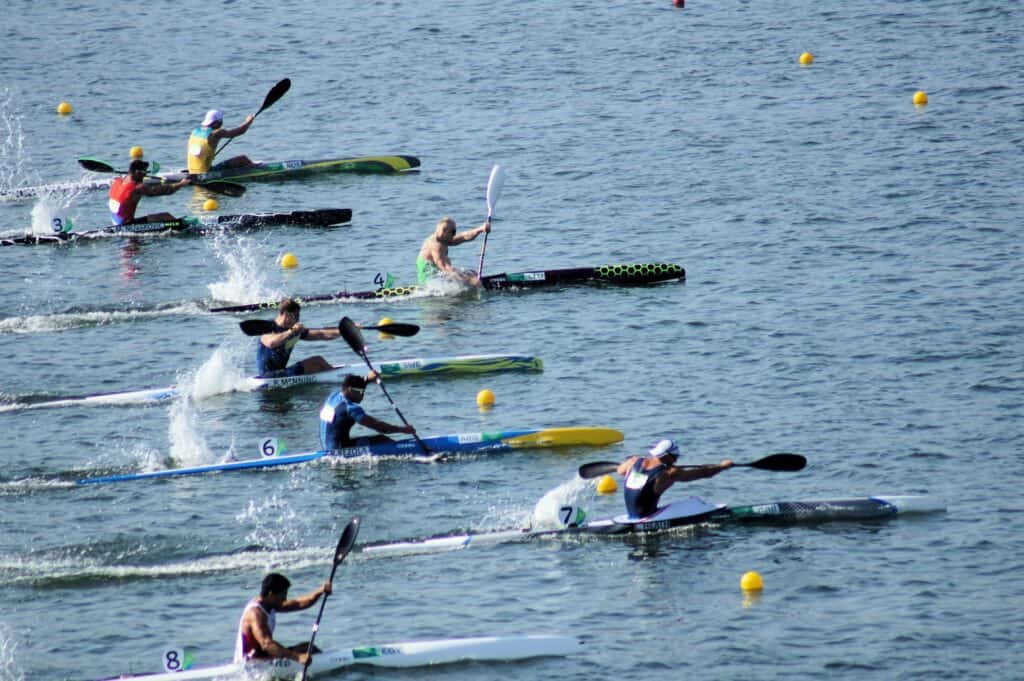
The forward momentum you gain with a kayak wing paddle blade adds at least 4% to your performance gains (depending on who you ask and what research you find). 4% is relatively minor, but on the coast to coast kayak stage; we take roughly 70km of river and a 5hr time, minus 4%, then you effectively paddle 67.2km for 4hrs and 48mins (saving 2.8km and 12mins). All the small gains and percentages add up over a 11+hr multisport race! Our clients know so and think so!
Daniel Bernoulli (1700 – 1782) was a Dutch-born scientist from a family of renowned mathematicians. In 1738, Bernoulli published “Hydrodynamica”, his study of fluid hydrodynamics in motion. Bernoulli asserted that as a fluid (or air) moves faster, it produces less pressure, and conversely, slower moving particles produce greater pressure; called the ‘Bernoulli Principle’.
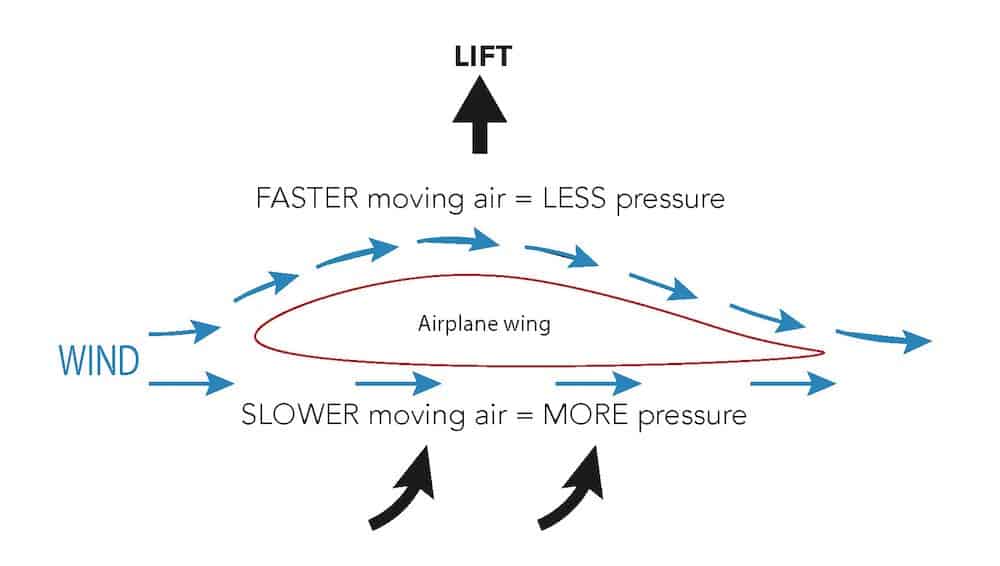
Around 180 years later, in North Carolina, the Wright brothers make the first successful flight in history of a self-propelled, heavier-than-air plane on December 17, 1903. That is theory-based-practice of the wing blade in first effect.
Then in 1983, Stefan Lindeberg and Leif Hakansson invent the first kayak wing paddle blade, developed after the kayaking technique itself for wing-paddling.
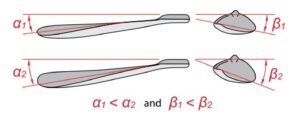
An astute reader might also know that all of this was actually ‘invented’ around 150 million years ago during the middle-late Jurassic period, when birds first appeared according to fossil records. Birds have wings, birds fly, birds create lift!
And for the caffeine-fueled comedians; in 1984 – one year after the paddle blade hit the scenes – Red Bull was invented, giving people wings.
Later in 1991, Braca paddles manufactured water sports paddles, then in 1993 Jantex paddles developed them commercially too. These two brands are the top choices of fast and forward paddling athletes, just try a quick Google and YouTube search revealing who the big brands are: Braca and Jantex.
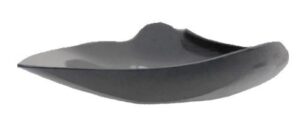
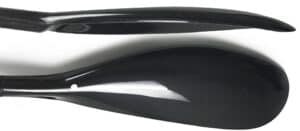
Big brands and smart ideas aren’t what solely move you forwards and create lift. As with the paddle wing invention being created after the paddle technique, it is those behind the paddle and how they paddle!
Racers as well as recreational paddlers need to know that kayak wing paddle blades are only better at doing a forward stroke, and only if the forward stroke is done with good technique. That means these wing paddles should only be used in conditions and with craft allowing you to make full use of the benefits of a wing paddle.
If your kayak is made for speed and straight lines on relatively flat calm waters, like a racing kayak or multisport, a wing paddle is the right choice.
In essence, the wing profile creates “lift” when it moves sideways through the water; propelling you forward. The same way an aeroplane’s wings create lift when it moves forward through the air, lifting you up.
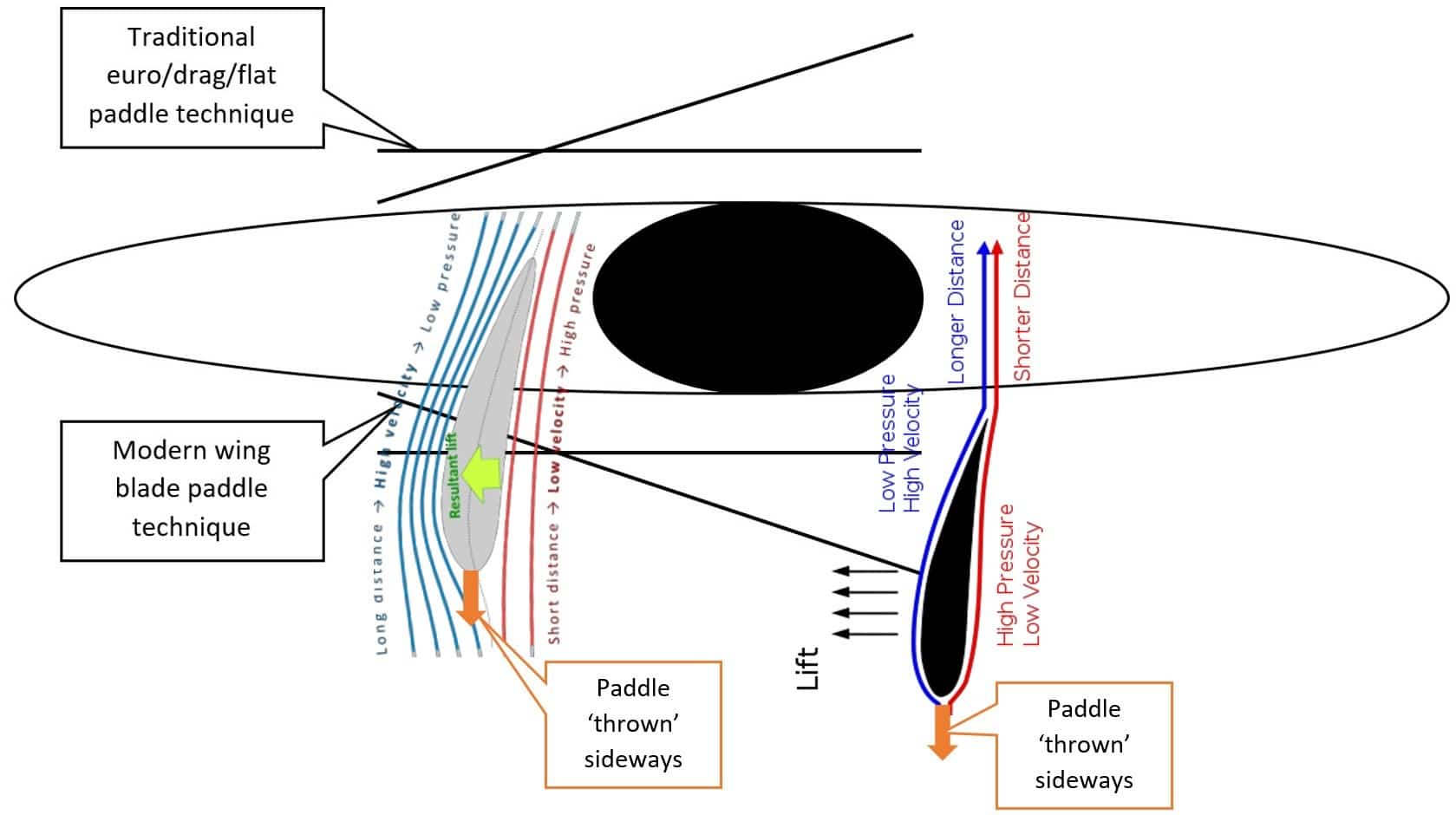
Putting the wing paddle blade in the water and pulling it straight backwards (parallel with the kayak), you’re simply pulling a spoon-shaped wing paddle blade through the water. A wing paddle blade should not soley move backwards during the stroke, making it more efficient. Using the airfoil section of a wing paddle blade thrown sideways makes use of the Bernoulli effect to generate ‘lift’ on the front of the paddle blade; driving you forwards and faster.
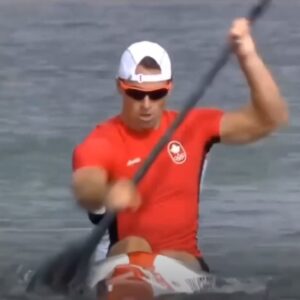
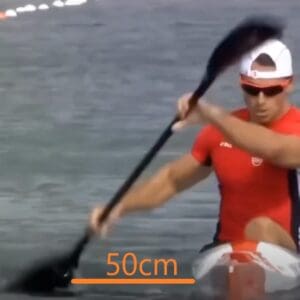
Wing blade paddle movement through water means strokes enter close to the boat, at your feet, then pulled diagonally towards the stern, moving away from the boat. The blade should move in a straight line from entry to exit (this line is about 30 degrees relative to your boat). That straight vector line movement combines the pure pull action of a normal forward stroke with the sideways wing action of the foil shape and body technique to gain extra lift/forward motion. Learn more about it and put it into practice clicking here.
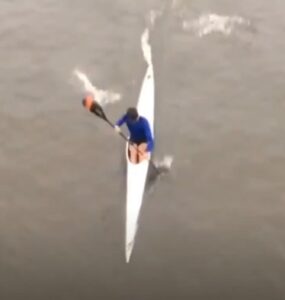
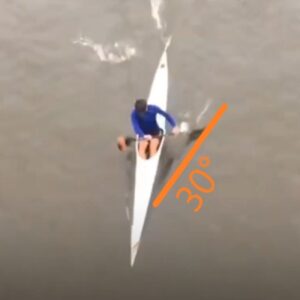
The airplane wing’s upper surface is curved (as is the paddle wing blade) so the air (or water) flowing over the top of the wing speeds up and stretches out, decreasing pressure above the wing. Bernoulli’s theorem implies that faster speed over the wing correlates with lower pressure, which is lift. Water similarly traveling across the top of the wing blade (the non power-face / back of a paddle blade) moves faster than the water moving along the wing’s bottom surface (paddle blade power face / front). So now you can imagine the wing paddle ‘trying’ to rise up to fill in that empty – or lower – space to create equal areas of pressure. Since high pressure (the lower wing) always moves toward low pressure (the upper wing), the air/water below the wing pushes upward toward the water/air above the wing. The wing is then “lifted” by the force of the air/water perpendicular to the wing, for the plane this is up, for kayakers this is forward. The faster wings move, the more lift there is.
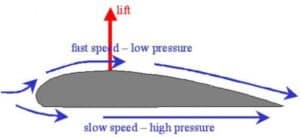
It is important to note that the kayak paddle must accelerate backward to propel the boat forward. That is a requirement of the laws of Physics. Even with Bernoulli’s and possibly the Wrights brothers and even Lindeberg & Hakansson’s help (with a wing paddle), we still need to ‘throw some water backwards’. Lift is generated for an airplane, because it takes forwards thrust (of a jet engine) to get the airplane moving – Newton’s first law at work. This law states that an object in motion remains in motion, unless acted on by an external force.
So if you are now following; the wing paddle stroke is neither backward nor sideways, it is now in fact a diagonal hybrid from toes to hips. About 30 degrees to be near-precise ending 50cm from your hips. Learn more about it and put it into practice clicking here.
Powerful muscle groups of the whole trunk are used during increased twisting/rotation of the body, and less bending of the arms at the elbow. This new technique results in a greater pulling force due to larger muscle groups and efficient paddling. Winged paddles encourage the paddler to generate drive better from their torso rotation, so bringing larger muscle groups into play. It is as simple as comparing the muscle mass of both your arms (7.2kgs) to those of your torso (36.5kg) for an average human weight of 67.5kg. This is both about efficiency and better use of body biomechanics for the forward paddling stroke.
The present wing invention relates to a blade which is constructed primarily for this new paddling technique. It allows for fewer power losses resulting from the formation of eddy currents around the blade from euro/drag paddles and the old technique of only pulling backward grabbing the same ‘old water’.
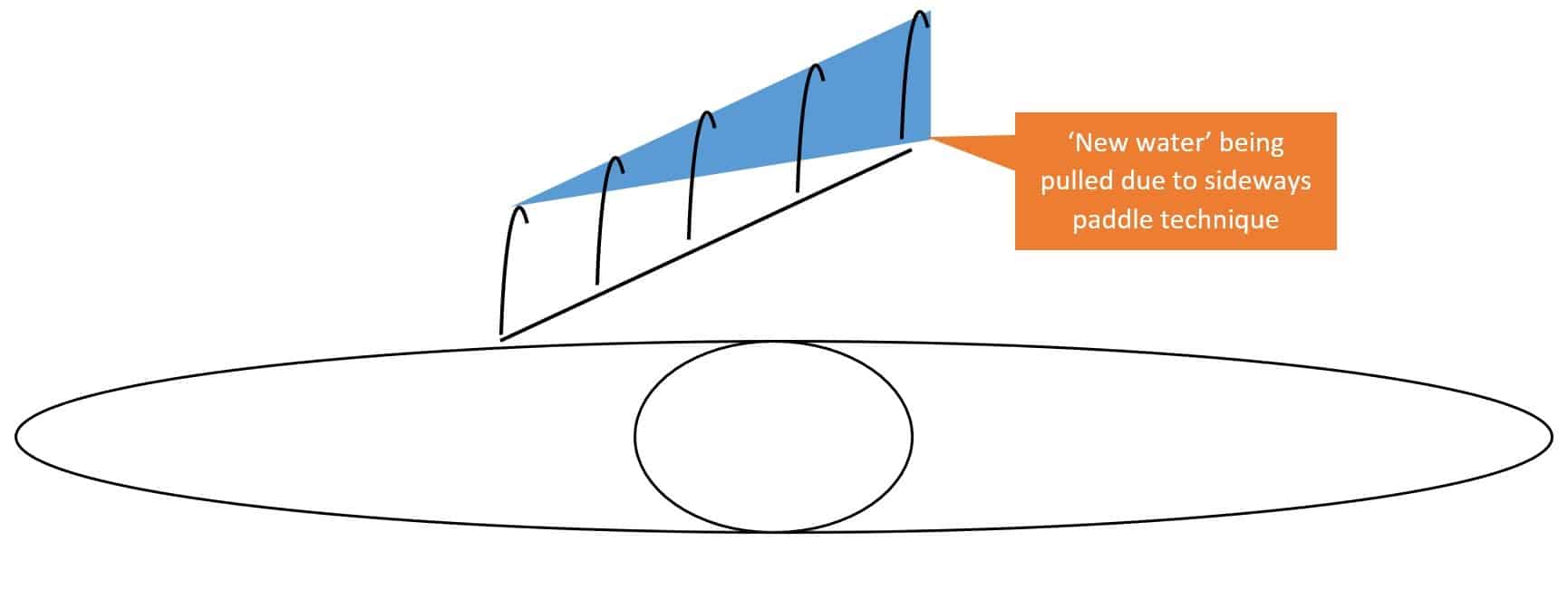
What few mention also, is that for wings to be effective you need to paddle at a certain pace. Just like an airplane will not fly unless it has a certain amount of thrust or forward momentum for the wings lift to start working (the average jetliner takesoff at 260km/h).
Vaaka, the company many athletes use to track their paddling cadence and strokes, recommends at a 70-80% of maximum heart rate, a paddling cadence of 30 double strokes per minute (every stroke into the water).
How hard is it to switch from flat/drag/euro blades to wing blade paddles? It is relatively simple; but the hardest part is breaking old, stubborn incorrect techniques! Learn more about it and put it into practice clicking here.
email support@snm.nz or call us on 0800 76 62 66